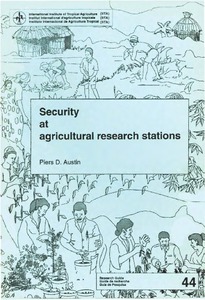| dc.contributor.author | Boahen, S. |
| dc.contributor.author | Chikoye, D. |
| dc.contributor.author | Abaidoo, R.C. |
| dc.contributor.author | Muananamuale, C. |
| dc.contributor.author | Engoke, C.S. |
| dc.date.accessioned | 2019-12-04T11:26:25Z |
| dc.date.available | 2019-12-04T11:26:25Z |
| dc.date.issued | 2014 |
| dc.identifier.citation | Boahen, S., Chikoye, D., Abaidoo, R., Muananamuale, C. & Engoke, C.S. (2014). Growth and yield responses of two soybean cultivars to inoculation, P and N fertilization in northern Mozambique. Poster: Presented at the ASA, CSSA, & SSSA International Annual Meeting held at Long Beach, Nov. 2-5. |
| dc.identifier.uri | https://hdl.handle.net/20.500.12478/4593 |
| dc.description.abstract | Inoculation of soybean with Bradyrhizobium spp. can increase soybean yield especially on fields with no recent history of soybean production. However, yields of inoculated soybean may be constrained in P deficient soils. The objective of this study was to evaluate the responses of two soybean cultivars to inoculation, P and starter N application, and their interactions on nodulation and grain yield. A field trial was conducted on clay loam soil in Zambesia Province, Mozambique during the 2012/2013 growing season using soybean cultivars Storm (determinate and non‐promiscuous) and Zamboane (indeterminate and promiscuous). A split‐plot design arranged in a randomized complete block with zero and 40 kg P/ha as main plots was used. The sub‐plots consisted of a factorial combination of the two varieties, 40 kg N/ha as starter N, a peat‐based inoculant applied to the seed at planting, and a combination of 40 kg N/ha and inoculant. Inoculation increased nodulation in both soybean cultivars but the effect of P on nodule formation was not consistent across sites and variety. For example, in Ruace where soil P status was relatively high, P application alone did not affect nodule formation of both Storm and Zamboane. Starter N generally depressed nodulation across sites and varieties when applied alone. However, whereas starter N decreased nodulation by Zamboane when combined with inoculant, it increased nodulation by Storm. Positive interaction occurred when inoculant was applied in combination with P across varieties and sites. Applying inoculant combined with P and starter N led to the highest nodule production by Storm. However, adding starter N to the inoculant plus P treatment did not increased nodulation by Zamboane. The other growth and yield variables followed similar trend as nodulation. Grain yields of inoculation treatment alone were higher than those that received either P or starter N. |
| dc.language.iso | en |
| dc.subject | Soybeans |
| dc.subject | Glycine Max |
| dc.subject | Cultivars |
| dc.subject | Mozambique |
| dc.title | Growth and yield responses of two soybean cultivars to Inoculation, P and N fertilization in Northern Mozambique |
| dc.type | Poster |
| cg.contributor.crp | Maize |
| cg.contributor.affiliation | International Institute of Tropical Agriculture |
| cg.coverage.region | Africa |
| cg.coverage.region | Southern Africa |
| cg.coverage.country | Mozambique |
| cg.authorship.types | CGIAR single centre |
| cg.iitasubject | Soybean |
| cg.accessibilitystatus | Limited Access |
| local.dspaceid | 100843 |

